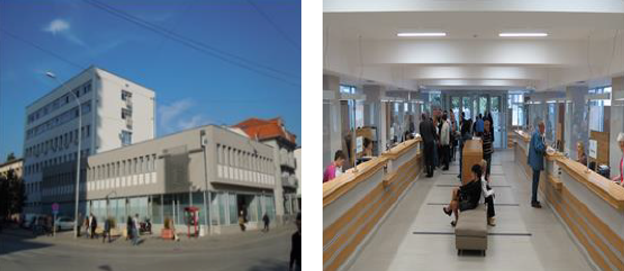Box 35: Basic Court in Leskovac - How to Secure Sufficient Funds for Maintenance?
In cooperation with the MOJ and the HJC, IMG fully refurbished the Leskovac Basic Court. The total investment for the court exceeded 2 million EUR, and the rehabilitation work lasted for almost 18 months. However, the MOJ responsible for the maintenance of the court has not yet signed the maintenance protocol or set a maintenance budget for this year

Box 36: The Croatian model for organizational structure of the Ministry of Justice, responsible for the management and allocation of resources for judicial infrastructure.
1. Finance and Public Procurement Sector (37 employees)
1.1 Finance Services
1.1.1 Finance Planning Department
1.1.2 Treasury Department
1.1.3 Accounting Department
1.2 Procurement and Material Operations Services
1.2.1 Procurement Department
1.2.2 Material Operations Department
2. Project and Investment Sector (23 employees)
2.1 Project Services
2.1.1 EU Programs and Projects Department
2.1.2 International Programs and Projects Department
2.2 Investment Services
2.2.1 Investment Operations Department
2.2.2 Equipment Planning Department
3. IT Sector (37 employees)
3.1 IT Development Services
3.2 IT Maintenance Services
3.3 IT Logistics Services
